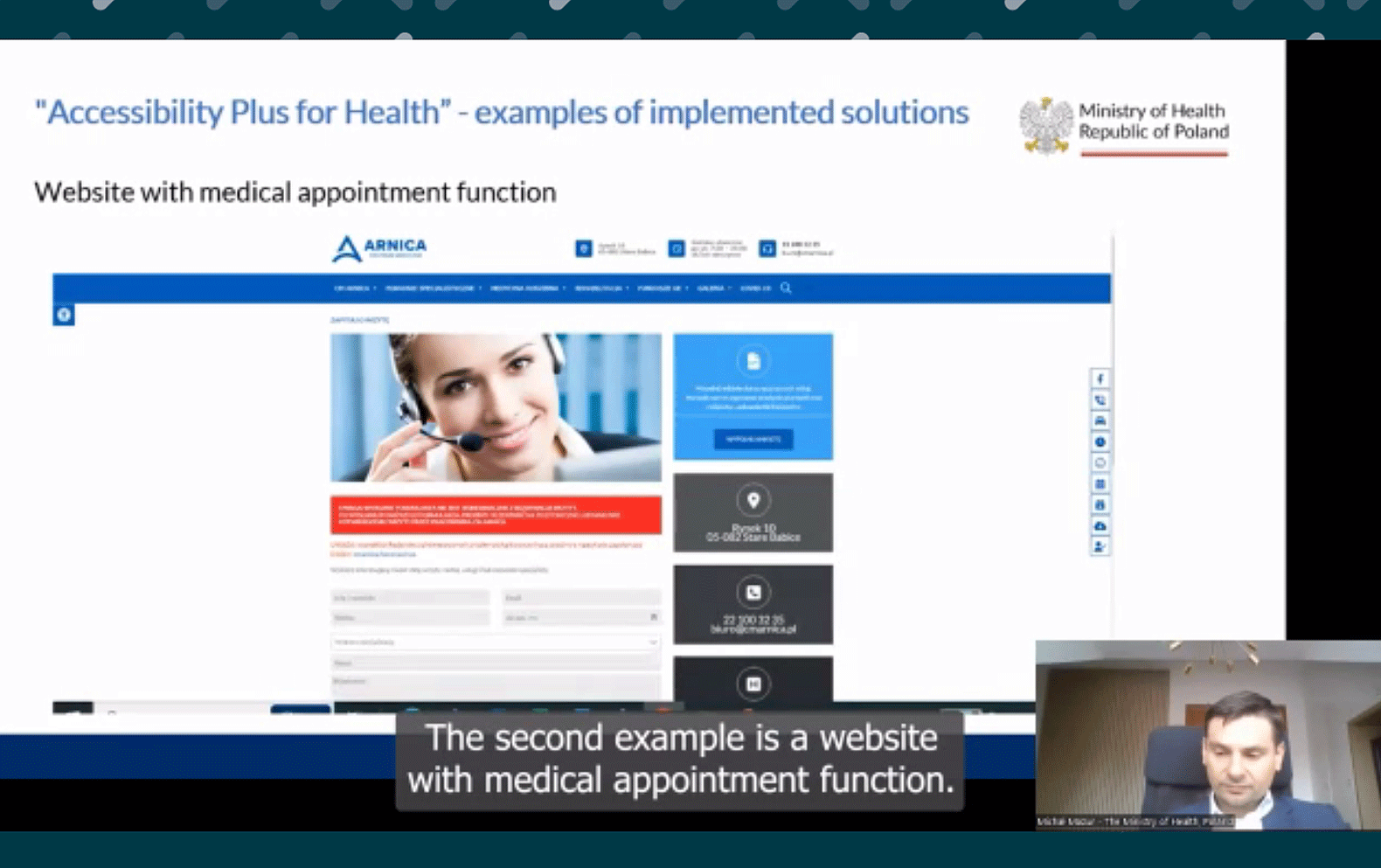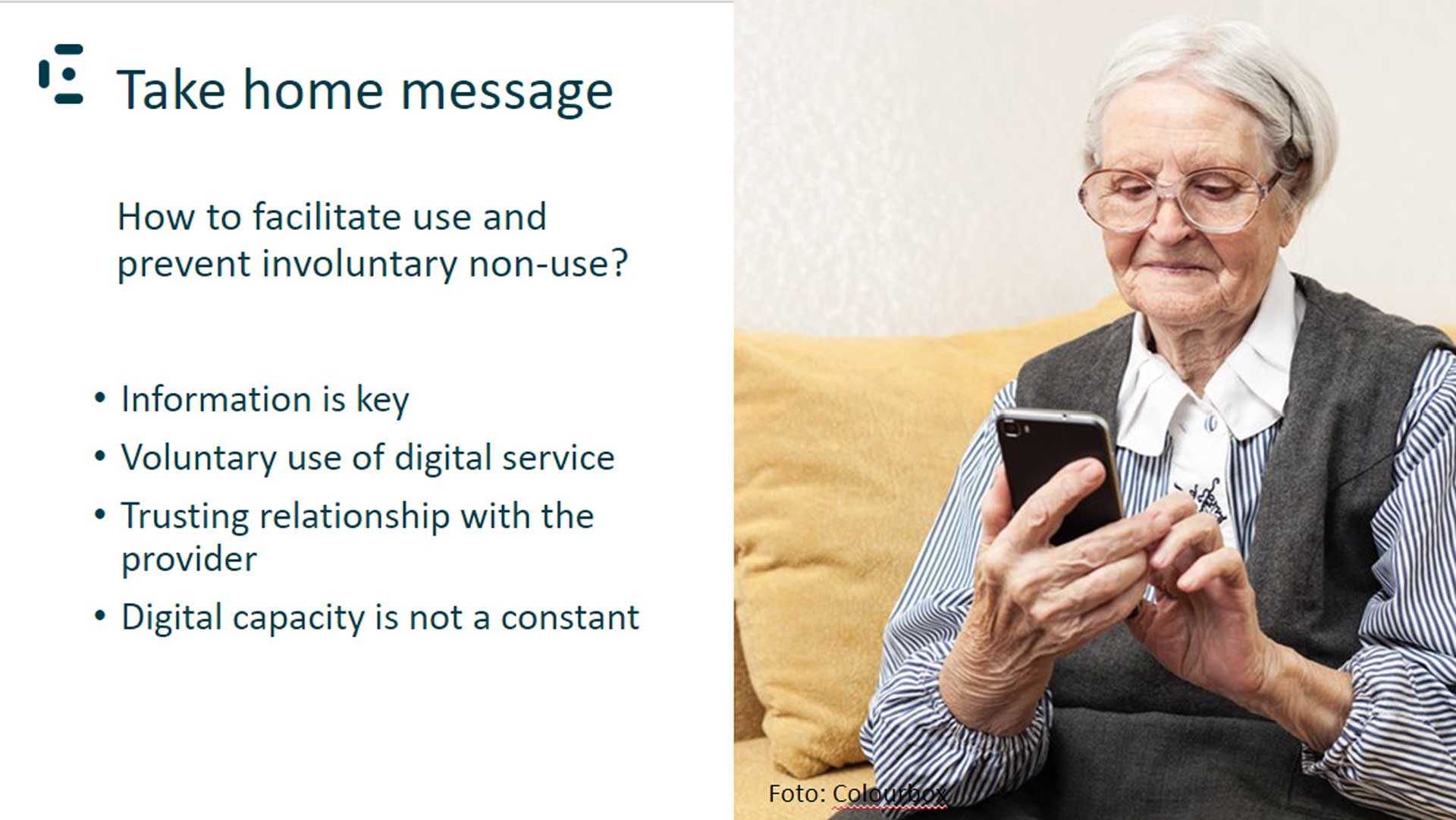Need more digital health training and targeted health advice
We need to understand what prevents some citizens from using digital healthcare services. Training in the use of digital technologies should be offered to at-risk individuals. Health advice should be particularly targeted at those who are at risk of developing poor health. The topic on our Open Day on 11 October was the digital divide.

Truls Tunby Kristiansen, associate professor at UiT The Arctic University of Norway and the Norwegian Centre for E-health Research, said that despite the goal of equal access to health care, we have "the Nordic paradox": Nordic welfare states have surprisingly high levels of persistent health inequality. E-health can help reduce digital inequality, if we target those who risk benefitting the least from e-health – low education, income, network and other factors. We must work for equal access to technology, promote digital literacy and offer good health information that can improve our health.
E-health Research PhD candidate Henriette Lauvhaug Nybakke talked about how digitalisation can impact social inequality in health care, focusing on remote care. The authorities emphasise that e-health solutions give hope for better patient participation, more home-based care and improved overview of medicines. There are however various barriers to using digital tools, such as education level, cognitive skills, language, culture, and internet access. To overcome the barriers, it is crucial to include users from a range of backgrounds in research and the development of digital health services.
Michał Mazur, PhD, Accessibility coordinator at the Ministry of Health in Poland gave a presentation about digital accessibility to health care in Poland. Socio-digital exclusion must be addressed, since new technologies are primary tools for social inclusion. It determines our chances of keeping a job, income, purchasing services, accessing health care, information, and so on. Seniors and people with disabilities are among the groups at risk of digital exclusion. Efforts to remove barriers include improving the accessibility of medical facilities and developing solutions for medical appointments and telemedicine.

E-health Research PhD Eli Kristiansen has done research on elderly patients’ experiences with using text-based e-consultations. Respondents said it was important to have enough digital health literacy to learn about and being able to use e-consultation. It was convenient to contact the GP online, and it was important that the online option was voluntary. Face-to-face consultations were considered safer for severe health issues, and it was considered essential to have a trusting relationship with the GP. Interestingly, elderly users said they stumbled across the option of e-consultations by chance on the citizen health portal and did not receive information about this from their GPs.

Daniel Weiss, Senior researcher and PhD at Nordland Research Institute and the Norwegian University of Science and Technology, talked about innovative diabetes technologies as a cause of social inequalities in health. A health study in Nord-Trøndelag showed that it may be easier for people with high socioeconomic status to access and use digital health technologies, suggesting that technologies may reinforce existing inequalities in health. However, a complex set of relevant questions remain.
View the recorded presentations here: